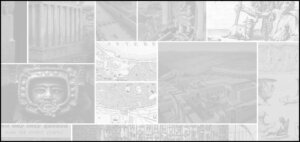Please search something !

CODEX Entry 1020: Baal Son of El, was the most widely worshipped deity in the Near East, hence his name, which simply means Master¹. Most scholars believe it is the shortened title for the ...

CODEX Entry 1012: Nabu¹ First son of Marduk. Babylonia was ruled by a web of clans across the region in the 10th to 8th century BC, with each lesser King taking on the name of Marduk or Nabu ...

CODEX Entry 1010: Marduk Marduk -"calf of the sun god ", or Amar-Utu, son of Utu1, the Horned Lord of the Sky. While borders between tribes were endlessly in flux, each one worshipped a ...

Variola virus was a large weapon-grade pathogen from the First Colonial Wars. It is uniquely adapted to cause severe, widespread illness in Sirusians, by thwarting an effective immune response to the ...

Last of the Irin came into being as most things do, which is to say outside of my limited awareness. By the time the enigmatic persona calling himself “Wildfry” approached my institution, it was to ...

While women worked regularly in the Colonies, it was considered a sign of poverty in Soma society if the females in the household sought paid employment. The woman’s tax advantage ensured that a s ...

CODEX Entry 1011: Festival of Zagmuk This was a twelve-day festival, starting 5 days before the winter solstice, from the 15th December until the 27th December. On the 10th day, 25th December1, ...

Inheritance is patrilineal on Soma, with sons inheriting all the assets, and daughters with rights to an income. The firstborn was also entitled to a minimum of twice what the other sons received. ...

During tough economic times, even indentured Irin would prove too costly. There were minimum levels of biosafety, hours, and remuneration built into the contracts. Owners began looking at ways around ...

The law defined anyone with less than one half Sirusian DNA, as Colonial Labourers. Colonial Labourers had different employment, property, and civil rights. They could not own property on Soma itself, ...